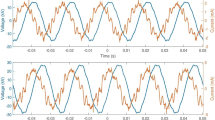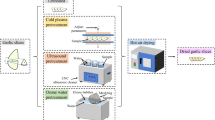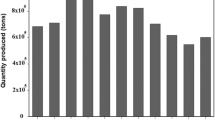Abstract
The effect of processing temperature of hot air (HA) and superheated steam (SS) on functional and nutritional properties of yellow pea (Pisum sativum L.) kernels such as moisture content, hydration capacity, cooking characteristics, dehulling efficiency, microstructure, starch gelatinization, and protein content were studied. Three processing temperatures (120, 135, and 150 °C) for both HA and SS were used, while keeping the velocity of air and steam at 1 m/s. Both processing methods (HA and SS) exhibited a significant effect (p < 0.05) on the selected functional properties. Dehulling efficiency of HA-processed peas ranged from 83.5 to 88.2%, whereas for SS-processed peas, it ranged between 85.4 and 89.9%, within the processing temperature range. An increase of 19.1, 20.0, and 35.0% in porosity was observed in SS-processed yellow pea when compared to those processed with HA, at 120, 135, and 150 °C, respectively. At 150 °C, peas processed with HA demonstrated a greater reduction in protein content by 2.38%, whereas a protein reduction of 0.75% with SS was achieved. The study also explored optimization of initial moisture content (26, 40, and 54%) of yellow peas for selected SS temperatures (120, 135, and 150 °C) in order to minimize soaking time prior to cooking. Results showed a pronounced reduction in the peak extrusion force of cooked peas with an initial moisture content of (54%) and processed in SS, for 5 and 10 min cooking times, ensuring a cooked texture (force ratio < 0.5) Based on these results, it is inferred that SS has potential to minimize the overall cooking time of yellow peas without compromising functional and nutritional properties.








Similar content being viewed by others
Availability of Data and Material
The authors declare that the data supporting the findings of this study are available within the article. The raw/derived data supporting the findings of this study are available from the corresponding author on request.
References
AACC Method 44–17.01. (2010). Moisture-Air-oven method (Pulses). St. Paul: Approved Methods of the American Association of Cereal Chemists. https://methods.aaccnet.org/summaries/44-17-01.aspx
AACC Method 56–30.01. (2012). Physicochemical tests-water hydration capacity of protein materials. St. Paul: Approved Methods of the American Association of Cereal Chemists.
AACC Method 56–36.01. (2012) Firmness of cooked pulses. St. Paul: Approved Methods of the American Association of Cereal Chemists. https://doi.org/10.1094/AACCIntMethod-56-36.01
Abbey, B., & Ibeh, G. (1988). Functional properties of raw and heat processed cowpea (Vigna unguiculata, Walp) flour. Journal of Food Science, 53(6), 1775–1777. https://doi.org/10.1111/j.1365-2621.1988.tb07840.x
Affrifah, N. S., & Chinnan, M. S. (2006). The effect of drying conditions on the development of the hard to cook defect in steam processed cowpeas. International Journal of Food Science and Technology, 41(8), 867–877.
Arntfield, S. D., Scanlon, M. G., Malcolmson, L. J., Watts, B., Ryland, D., & Savoie, V. (1997). Effect of tempering and end moisture content on the quality of micronized lentils. Food Research International, 30(5), 371–380. https://doi.org/10.1016/S0963-9969(97)00061-6
Arntfield, S. D., Cinq-mars, C. D., Ryland, D., Watts, B., & Malcolmson, L. (2000). Evaluation of lentil texture measurements by compression testing. Journal of Texture Studies, 31, 391–405.
Asare, E. K., Jaiswal, S., Maley, J., Båga, M., Sammynaiken, R., Rossnagel, B. G., & Chibbar, R. N. (2011). Barley grain constituents, starch composition, and structure affect starch in vitro enzymatic hydrolysis. Journal of Agricultural and Food Chemistry, 59(9), 4743–4754. https://doi.org/10.1021/jf200054e
Bellido, G. G. (2003). The effect of micronization operational conditions on the physicochemical properties of navy beans ( Phaseolus vulgaris L.). Food Engineering and Physical Properties, 68(5), 1731–1735.
Black, R., Brouwer, J., Meares, C., & Iyer, L. (1998a). Variation in physico-chemical properties of field peas (Pisum sativum). Food Research International, 31(2), 81–86. https://doi.org/10.1016/S0963-9969(98)00057-X
Black, R. G., Singh, U., & Meares, C. (1998b). Effect of genotype and pre-treatment of filed peas (Pisum sativum) on their dehulling and cooking quality. Journal of Science of Food and Agriculture, 77(2), 251–258.
Buckle, K., & Sambudi, H. (1990). Effect of soaking and boiling treatments on the quality of winged bean seed. Journal of the Science of Food and Agriculture, 53(3), 379–388. https://doi.org/10.1002/jsfa.2740530310
Cenkowski, S., Pronyk, C., Zmidzinska, D., & Muir, W.E. (2007). Decontamination of food products with superheated steam. Journal of Food Engineering, 83(1), 68–75. https://doi.org/10.1016/j.jfoodeng.2006.12.002
Chandrashaker, U., Lalitha, B., & Rajamal-Devadas, P. (1981). Evaluation of protein quality of raw, roasted and autoclaved legumes supplemented with sulphur-containing amino acids. Indian Journal of Nutrition and Diet, 18, 283–288.
de Buckle, T. S. (1981). Restrictions on using soya proteins in foods in Latin America and the world. Journal of the American Oil Chemists’ Society, 58, 433–438.
Deshpande, S. S., & Damodaran, S. (1990). Food legumes: chemistry and technology. In Advances in Cereal Science and Technology, ed. Y. Pomeranz. 147–241. St. Paul, Minnesota: American Association of Cereal Chemists.
Deepa, C., & Hebbar, H. (2016). Effect of High-Temperature Short-Time “Micronization” of Grains on Product Quality and Cooking Characteristics. Food Engineering Reviews, 8(2), 201–213. https://doi.org/10.1007/s12393-015-9132-0
Erkinbaev, C., Herremans, E., Trong, N. D., & N., Jakubczyk, E., Verboven, P., Nicolaï, B., & Saeys, W. (2014). Contactless and non-destructive differentiation of microstructures of sugar foams by hyperspectral scatter imaging. Innovative Food Science and Emerging Technologies, 24, 131–137. https://doi.org/10.1016/j.ifset.2013.08.007
Erkinbaev, C., Derksen, K., & Paliwal, J. (2017). Assessment of mung bean quality through single kernel characterization. Food and Bioprocess Technology, 10(12), 2156–2164.
Erkinbaev, C., Ramachandran, R. P., Cenkowski, S., & Paliwal, J. (2019). A comparative study on the effect of superheated steam and hot air drying on microstructure of distillers’ spent grain pellets using X-ray micro- computed tomography. Journal of Food Engineering, 241, 127–135. https://doi.org/10.1016/j.jfoodeng.2018.08.004
FAOSTAT. 2018. FAO Statistics Division. (2017). from http://www.fao.org/faostat/en/#data/QC2019/08/30
Frias, J., Giacomino, S., Peñas, E., Pellegrino, N., Ferreyra, V., & Apro, N. (2011). Assessment of the nutritional quality of raw and extruded Pisum sativum L. var. laguna seeds. Food Science and TechnolOgy, 44, 1303–1308.
Geoffrey, C. M., Lawrence, O. G., Hakgamalang, J. C., Januarius, O. A., & Rural Infrastructure and Agro-Industries Division (2011). Rural Structure in the Tropics – Design and Development. Food and Agriculture Organization of United Nations, 363–386. http://www.fao.org/3/i2433e/i2433e10.pdf
Grewal, M., Jha, S., Patil, R., Dhatt, A., Kaur, A., & Jaiswal, P. (2013). A less energy intensive process for dehydrating onion. Journal of Food Science and Technology, 52(2), 1131–1137. https://doi.org/10.1007/s13197-013-1092-x
Gubbels, G., Chubey, B., Ali-Khan, S., & Stauvers, M. (1985). Cooking quality of field pea matured under various environmental conditions. Canadian Journal of Plant Science, 65(1), 55–61. https://doi.org/10.4141/cjps85-008
Head, D., Cenkowski, S., Arntfield, S., & Henderson, K. (2011). Storage stability of oat groats processed commercially and with superheated steam. Food Science and Technology, 44(11), 261–268. https://doi.org/10.1016/j.lwt.2010.05.022
Hendrix., B. M., & Dennis, J. (1938). Changes of nitrogen content brought by denaturation of proteins. Journal of Biological Chemistry, 126, 315–322.
Herremans, E., Verboven, P., Bongaers, E., Estrade, P., Verlinden, B., Wevers, M., & Nicolai, B. (2013). Characterisation of “Braeburn” browning disorder by means of X-ray micro CT. Postharvest Biology and Technology, 75, 114–124. https://doi.org/10.1016/j.postharvbio.2012.08.008
Islam, M. Z., Kitamura, Y., Kokawa, M. et al. (2017). Degradation kinetics and storage stability of vacuum spray-dried micro wet-milled orange juice (Citrus unshiu) powder. Food and Bioprocess Technology 10, 1002–1014. https://doi.org.uml.idm.oclc.org/10.1007/s11947-017-1868-5
Iyota, H., Nishimura, N., Yoshida, M., & Nomura, T. (2001). Simulation of superheated steam drying considering initial steam condensation. Drying Technology, 19(7), 1425–1440. https://doi.org/10.1081/DRT-100105298
Jangam S. V., & Mujumdar, A. S. (2015). Heat pump assisted drying technology—overview with focus on energy, environment and product quality. In E. Tsotsas & A. S. Mujumdar (Eds.), Drying Technology: Energy Savings (pp. 121–162). Wiley:VCH.
Jackson, G., & Varriano-Marston, E. (1981). Hard-to-cook phenomenon in beans: Effects of accelerated storage on water absorption and cooking time. Journal of Food Science, 46(3), 799–803. https://doi.org/10.1111/j.1365-2621.1981.tb15351.x
Joardder, M., Kumar, C., & Karim, M. (2017). Review of Prediction of porosity of food materials during drying: Current challenges and directions. Critical Reviews in Food Science and Nutrition, 58(17), 2896–2907. https://doi.org/10.1080/10408398.2017.1345852
Johnson, P., Cenkowski, S., & Paliwal, J. (2013). Superheated steam drying characteristics of single cylindrical compacts produced from wet distillers spent grain. Saskatoon, Saskatchewan: CSBE/SCGAB 2013 Annual conference 7–10 July 2013. Paper No. CSBE13–11. http://www.csbe-scgab.ca/docs/meetings/2013/CSBE13011.pdf
Kelkar, S., Srinivasan, G., Robinson, B., Roback, R., Viswanathan, H., Rehfeldt, K., & Tucci, P. (2013). Review of Breakthrough of contaminant plumes in saturated volcanic rock: implications from the Yucca Mountain site. Geofluids, 13(3), 273–282. https://doi.org/10.1111/gfl.12035
Kemp, I. C., Fyhr, B. C., Laurent, S., Roques, M. A., Groenewold, C. E., Trotsas, E., Sereno, A. A., Bonazzi, C. B., Bimbenet, J., & Kind, M. (2001). Methods for processing experimental drying kinetics data. Drying Technology, 19(1), 15–34.
Kittiworrawatt, S., & Devahastin, S. (2009). Improvement of a mathematical model for low pressure superheated steam drying of a biomaterial. Chemical Engineering Science, 64(2644), 2650. https://doi.org/10.1016/j.ces.2009.02.036
Kon, S. (1979). Effect of soaking temperature on cooking and nutritional quality of beans. Journal of Food Science, 44(5), 1329–1335. https://doi.org/10.1111/j.1365-2621.1979.tb06432.x
Kumar, D. G. P., Hebbar, H. U., Sukhumar, D., & Ramesh, M. N. (2005). Infrared and hot air drying of onions. Journal of Food Process and Preservation, 29, 132–150.
Leeratanarak, N., Devahastin, S., & Chiewchan, N. (2006). Drying kinetics and quality of potato chips undergoing different drying techniques. Journal of Food Engineering, 77, 635–643. https://doi.org/10.1016/j.jfoodeng.2005.07.022
Mujumdar, A. S., & Law, C. L. (2010). Drying technology: Trends and applications in postharvest processing. Food and Bioprocess Technology 3, 843–852. https://doi.org.uml.idm.oclc.org/10.1007/s11947-010-0353-1
Mariotti, F., Tomé, D., & Mirand, P. (2008). Converting nitrogen into protein-beyond 6.25 and Jones’ factors. Critical Reviews in Food Science and Nutrition, 48(2), 177–184. https://doi.org/10.1080/10408390701279749
Narayana, K., & Narasinga-Rao, M. S. (1982). Functional properties of raw and heat processed winged beans (Psophocarpus tetragonolobus) flour. Journal of Food Science, 47, 1534–1538.
Park H. S., Chung Y. E., & Seo J. K. (2015). Computed tomographic beam-hardening artefacts: mathematical characterization and analysis. Philosophical Transactions of the Royal Society A: Mathematical, Physical and Engineering Sciences, 373, 20140388. http://dx.doi.org/10.1098/rsta.2014.0388
Pelgrom, P. J. M., Schutyser, M. A. I. & Boom, R. M. (2013). Thermomechanical Morphology of Peas and Its Relation to Fracture Behaviour. Food and Bioprocess Technology 6, 3317–3325. https://doi.org.uml.idm.oclc.org/10.1007/s11947-012-1031-2
Piyawanitpong, C., Therdthai, N., Ratphitagsanti, W. (2018). Effect of precooking and superheated steam treatment on quality of black glutinous rice. Journal of Food Quality, 2–9 https://doi.org/10.1155/2018/8496723
Prachayawarakorn, S., Prachayawasin, P., & Soponronnarit, S. (2006). Heating process of soybean using hot-air and superheated-steam fluidized-bed dryers. Food Science and Technology, 39(7), 770–778. https://doi.org/10.1016/j.lwt.2005.05.013
Pronyk, C., Cenkowski, S., Muir, W. E., & Lukow, O. M. (2008). Optimum processing conditions of instant Asian noodles in superheated steam. Drying Technology, 26, 204–210. https://doi.org/10.1080/07373930701831457
Ramachandran, R. P., Bourassa, J., Paliwal, J., & Cenkowski, S. (2017a). Effect of temperature and velocity of superheated steam on initial condensation of distillers’ spent grain pellets during drying. Drying Technology, 35(2), 182–192. https://doi.org/10.1080/07373937.2016.1166123
Ramachandran, R. P., Paliwal, J., & Cenkowski, S. (2017). Thermo-physical properties of distillers’ spent grain pellets at different moisture contents and condensed distillers’ soluble concentrations. Food and Bioprocess Technology 10, 175–185.https://doi.org.uml.idm.oclc.org/10.1007/s11947-016-1807-x
Ramachandran, R. P., Akbarzadeh, M., Cenkowski, S., & Paliwal, J. (2018). Computational fluid dynamics in drying process modeling - A technical review. Food and Bioprocess Technology, 11(2), 271–292.
Ramachandran, R. P., Paliwal, J., & Cenkowski, S. (2018). Modeling ofeffective moisture diffusivity and activation energy of distillers’ spent grain pellets with solubles during superheated steam drying. Biomass and Bioenergy, 116(11), 39–48.
Rani, P. R., Chelladurai, V., Jayas, D., White, N., & Kavitha-Abirami, C. (2013). Storage studies on pinto beans under different moisture contents and temperature regimes. Journal of Stored Products Research, 52, 78–85. https://doi.org/10.1016/j.jspr.2012.11.003
Ross, K., Alejo-Lucas, D., Malcolmson, L., Arntfield, S., & Cenkowski, S. (2009). Interpretation of the force–deformation curves of cooked red lentils (lens culinaris). Journal of Texture Studies, 40(1), 109–126. https://doi.org/10.1111/j.1745-4603.2008.00172.x
Schoeman, L., Williams, P., Du Plessis, A., & Manley, M. (2016). X-ray micro-computed tomography (μCT) for non-destructive characterisation of food microstructure. Trends in Food Science and Technology, 47, 10–24. https://doi.org/10.1016/j.tifs.2015.10.016
Sefa-dedeh, S., Stanley, D. W., & Voisey, P. W. (1979). Effect of storage time and conditions on the hard-to-cook defect in cowpeas (Vigna unguiculata). Journal of Food Science, 44, 790–796.
Sehrawat, R., Nema, P. K., & Kaur, B. P. (2016). Effect of superheated stem drying on properties of foodstuffs and kinetics modelling. Innovative Food Science and Emerging Technology, 34, 285–301.
Shen, S., Hou, H., Ding, C., Bing, D., Lu, Z., & Shen, S. (2016). Protein content correlates with starch morphology, composition and physicochemical properties in field peas. Canadian Journal of Plant Science, 96(3), 404–412. https://doi.org/10.1139/cjps-2015-0231
Sivri, D., Köksel, H., & Bushuk, W. (1998). Effects of wheat bug (Eurygaster maura) proteolytic enzymes on electrophoretic properties of gluten proteins. New Zealand Journal of Crop and Horticultural Science, 26(2), 117–125. https://doi.org/10.1080/01140671.1998.9514048
Taechapairoj, C., Prachayawarakorn, S., & Soponronnarit, S. (2006). Modelling of parboiled rice in superheated-steam fluidized bed. Journal of Food Engineering, 76, 411–419. https://doi.org/10.1016/j.jfoodeng.2005.05.040
Tang, Z., & Cenkowski, S. (2000). Dehydration dynamics of potatoes in superheated steam and hot air. Canadian Biosystems Engineering, 42, 43–49.
Tang, Z., Cenkowski, S., & Muir, W. E. (2000). Dehydration of sugar-beet pulp in superheated steam and hot air. Transactions of the ASAE American Society of Agricultural Engineers, 43(3), 685–689.
Tang, Z., Cenkowski, S., & Izydorczyk, M. (2004). Thin layer drying of spent grains in superheated steam. Journal of Food Engineering, 67, 457–465.
Uengkimbuan, N., Soponronnarit, S., Prachayawarakorn, S., & Nathkaranakule, A. (2006). A comparative study of pork drying using superheated steam and hot air. Drying Technology, 24(12), 1665–1672. https://doi.org/10.1080/07373930601031513
Van Deventer, H. C., & Heijmans, R. M. H. (2001). Drying with superheated steam. Drying Technology, 19, 2033–2045. https://doi.org/10.1081/DRT-100107287
Varoquaux, P., Offant, P., & Varoquaux, F. (1995). Firmness, seed wholeness and water uptake during the cooking of lentils ( Lens culinaris cv. anicia) for “sous vide” and catering preparations. International Journal of Food Science and Technology, 30(2), 215–220. https://doi.org/10.1111/j.1365-2621.1995.tb01373.x
Vicent, V., Verboven, P., Ndoye, F. T., Alvarez, G., & Nicolaï, B. (2017). A new method developed to characterize the 3D microstructure of frozen apple using X-ray micro-CT. Journal of Food Engineering, 212, 154–164. https://doi.org/10.1016/j.jfoodeng.2017.05.028
Wakabayashi, M., Kawamura, F., & Okidate, J. (1956). Protein denaturation by ionizing radiation and role of oxygen. The Japanese Journal of Physiology, 5, 382–386.
Wang, N., & Castonguay, G. (2014). Effect of maturity on physicochemistry and cooking characteristics in yellow peas (Pisum satium). Canadian Journal of Plant Science, 94(3), 565–571.
Zielinska, M., Cenkowski, S., & Markowski, M. (2009). Superheated steam drying of distillers’ spent grains on a single inert particle. Drying Technology, 27(12), 1279–1285. https://doi.org/10.1080/07373930903195065
Acknowledgements
The authors are grateful to the Natural Science and Engineering Research Council of Canada, Canadian Pulse Science Cluster, and Canada Foundation for Innovation for supporting this study. Thanks are also due to AGT Foods for providing yellow pea samples.
Author information
Authors and Affiliations
Corresponding author
Additional information
Publisher's Note
Springer Nature remains neutral with regard to jurisdictional claims in published maps and institutional affiliations.
Rights and permissions
About this article
Cite this article
Brar, N.K., Ramachandran, R.P., Cenkowski, S. et al. Effect of Superheated Steam- and Hot Air-Assisted Processing on Functional and Nutritional Properties of Yellow Peas. Food Bioprocess Technol 14, 1684–1699 (2021). https://doi.org/10.1007/s11947-021-02668-1
Received:
Accepted:
Published:
Issue Date:
DOI: https://doi.org/10.1007/s11947-021-02668-1




